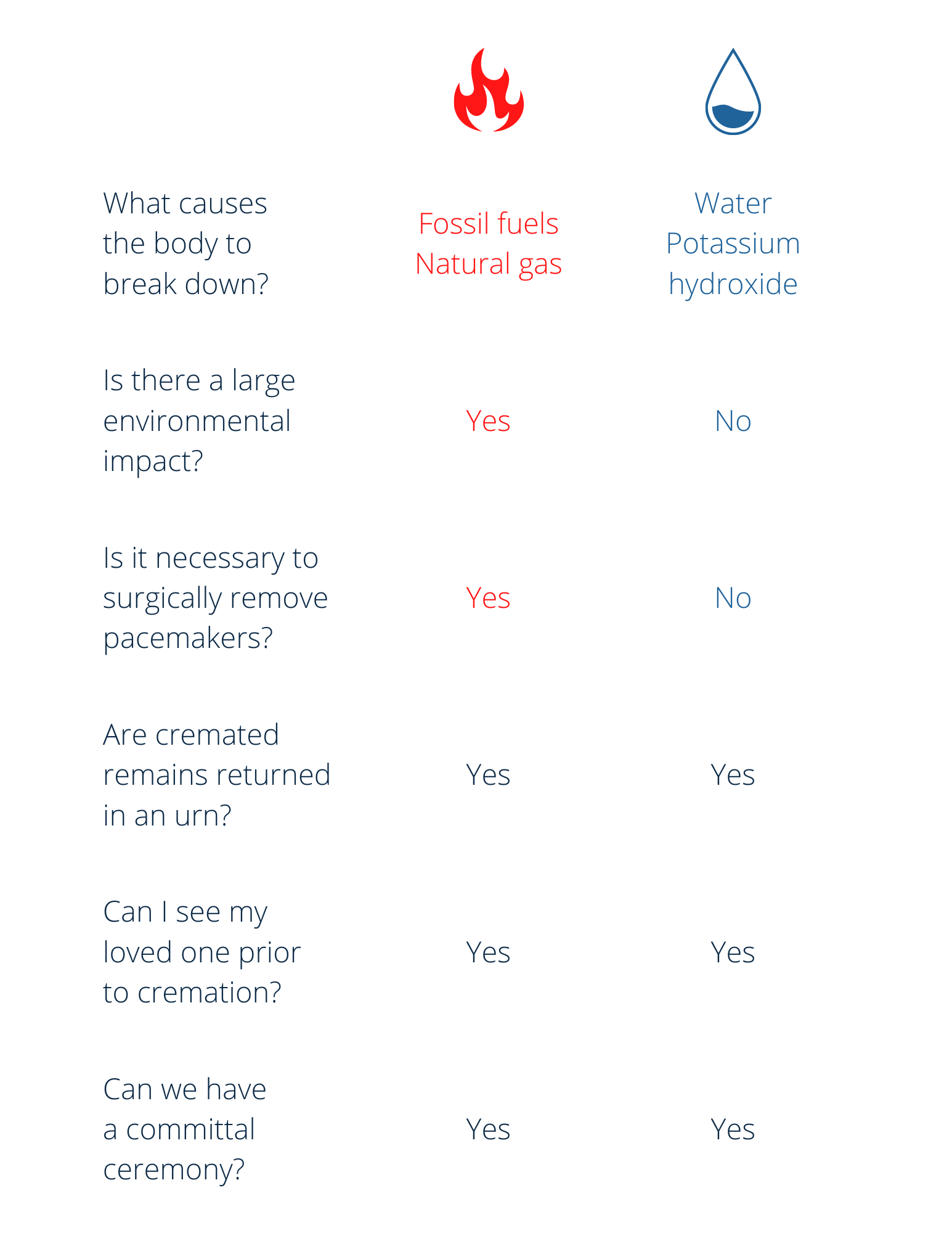What is Water Cremation?
The videos and information on this page are intended to give you an understanding of what the Water Cremation process entails. However, if you are curious, we invite you to come and see our facility with your own eyes. Please visit us for an open house.
We're here for you 24 hours a day, 7 days a week. Please call (561)-899-0008 anytime.
Our Simple Water Cremation package costs $2,980. For detailed pricing information, please visit our Pricing page.
Water cremation, also known as alkaline hydrolysis, is a water-based process that accelerates natural decomposition from years to hours.
The process is gentler than flame cremation, and it has a much smaller environmental impact.
As with flame cremation, the family is able to keep their loved one's cremated remains.
Animated Overview of the Water Cremation Process
(This video has no sound.)
What are the differences between Water and Flame Cremation?


